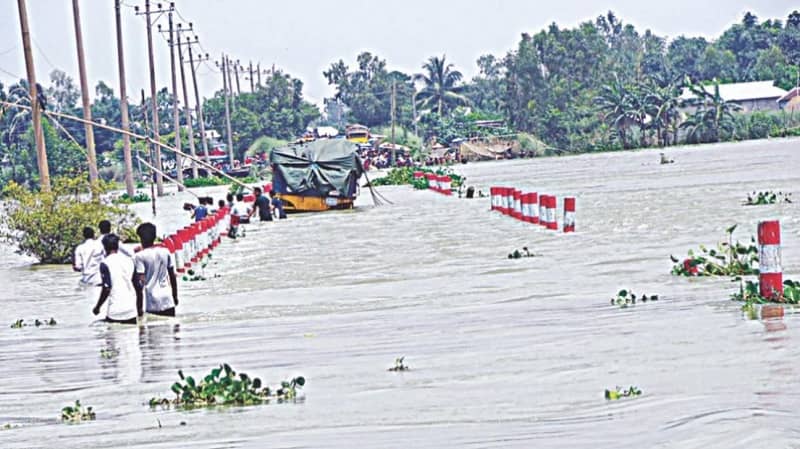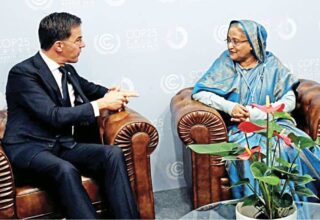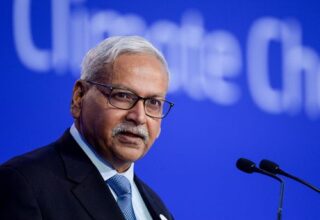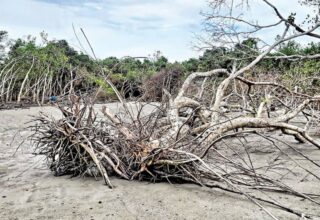
The developed countries of the world had agreed under the Paris Agreement to provide USD 100 billion each year, starting from 2020 onwards, to support mitigation as well as adaptation projects in developing countries. The Green Climate Fund (GCF) was set up with its secretariat in Songdo, Korea to handle a significant part of that amount. The GCF was launched with just over USD 10 billion to start its funding support to developing countries; it is now looking to replenish its fund in a bid to secure a big part of the 100 billion going forward.
Next week, the GCF will hold its big annual event in Songdo to share its plans with hundreds of partners from around the world gathering to review its progress. A delegation from Bangladesh will join the event as well. This is an opportune moment to discuss the progress achieved so far and to work towards improving the effectiveness of the funding for adaptation with a specific focus on the most vulnerable countries and communities.
The GCF Board deserves praise for making an early decision to allocate half of their funds for adaptation and only half for mitigation (since until then, 80 percent of global climate change funds were going to mitigation projects and only 20 percent to adaptation projects). They also decided to prioritise the most vulnerable developing countries in terms of receiving the adaptation funds.
While the GCF Board made this excellent decision early on, the GCF Secretariat and the systems they put in place have failed to deliver it effectively, with funding for adaptation projects reaching only around a third of their allocations (they fudged the figures by claiming that another third were both mitigation and adaptation projects!). Also, the most vulnerable developing countries including Bangladesh and other Least Developed Countries (LDCs) found it extremely onerous to meet all the compliance requirements set by the GCF. For example, it took over two years for Bangladesh to get just two entities accredited to seek funding from the GCF until now.
To be fair to the GCF, they now recognise that they have fallen short on delivering support for adaptation in the most vulnerable countries, and under the leadership of their new CEO Yannick Glemarec, who had spent several years in the UNDP office in Bangladesh in the nineties, they are looking at ways to enhance their effectiveness going forward.
I think the GCF should treat their mandate to support adaptation differently from their mandate to support mitigation projects. The latter works well for giving loans and also focusing on the bigger developing countries. Indeed, it can be argued that mitigation projects are now quite able to seek loans from the market and may not need to be subsidised by the GCF for much longer.
However, when it comes to adaptation, the clients are not venture capitalists who will take loans and repay them from an income stream selling renewable energy, but rather the most vulnerable people on the planet living in the most vulnerable countries. These communities and countries do not have the capacity to meet all the onerous conditions of the GCF’s proposal submission process. Hence, simply sitting in Songdo and waiting for the perfect project proposals to arrive on their desks is not going to work. They are going to have to reach out to these countries more effectively to support their ability to prepare and submit project proposals.
This has been demonstrated by a study of global adaptation funding by the International Institute for Environment and Development (IIED), which found that less than 20 percent of adaptation funding given to developing countries actually reached the most vulnerable communities within those countries. So to be fair to the global institutions providing adaptation funds to national governments, the problem is also a national governance issue where governments need to prioritise the most vulnerable communities in their own countries.
Thus, there has to be a better dialogue by the GCF with national governments about preparing and delivering more targeted funds so that the most vulnerable communities in the most vulnerable countries can benefit from that.
Another important area where the investments from GCF need to be much improved is in delivering transformational adaptation, as required by their mandate. To be fair, their main tool of funding projects for only a few years is not really a fit-for-purpose investment tool to deliver transformational adaptation over more than a decade on a national scale. Hence, the GCF Secretariat should allocate a small portion of their funds for longer-term engagement at the national level in each of the most vulnerable countries to develop both baselines and monitoring, evaluation and learning (MEL) systems that go beyond the projects themselves. As adaptation to climate change is inherently a learning-by-doing process, the GCF should consider funding national “learning” institutions and not just the “implementing” institutions, as they are doing now. To help with the learning process, local universities can be engaged with (but should be independently funded) the project implementers for the MEL components.
In the LDCs, such a network of universities called the LDC Universities Consortium on Climate Change (LUCCC) already exists, and is available to partner with the GCF on a country-by-country basis. A common methodology could also be developed across the countries and with other global funds such as the Adaptation Fund and the LDC Fund under the United Nations Framework Convention on Climate Change (UNFCCC).
Finally, it is important for the GCF to both enhance the proportion of its funds for adaptation projects and improve considerably on its ability to reach the most vulnerable communities in the most vulnerable countries, who are the main intended beneficiaries of the funds that the taxpayers of rich countries are contributing to the GCF. There is much to be done to improve its performance but it should not be impossible to do with the right attitude and partnerships.
Originally this article was published on August 19, 2019 at The Daily Star. The author Dr. Saleemul Huq is the director of the International Centre for Climate Change and Development (ICCCAD) at the Independent University, Bangladesh (IUB).
Email: saleemul.huq@icccad.net






